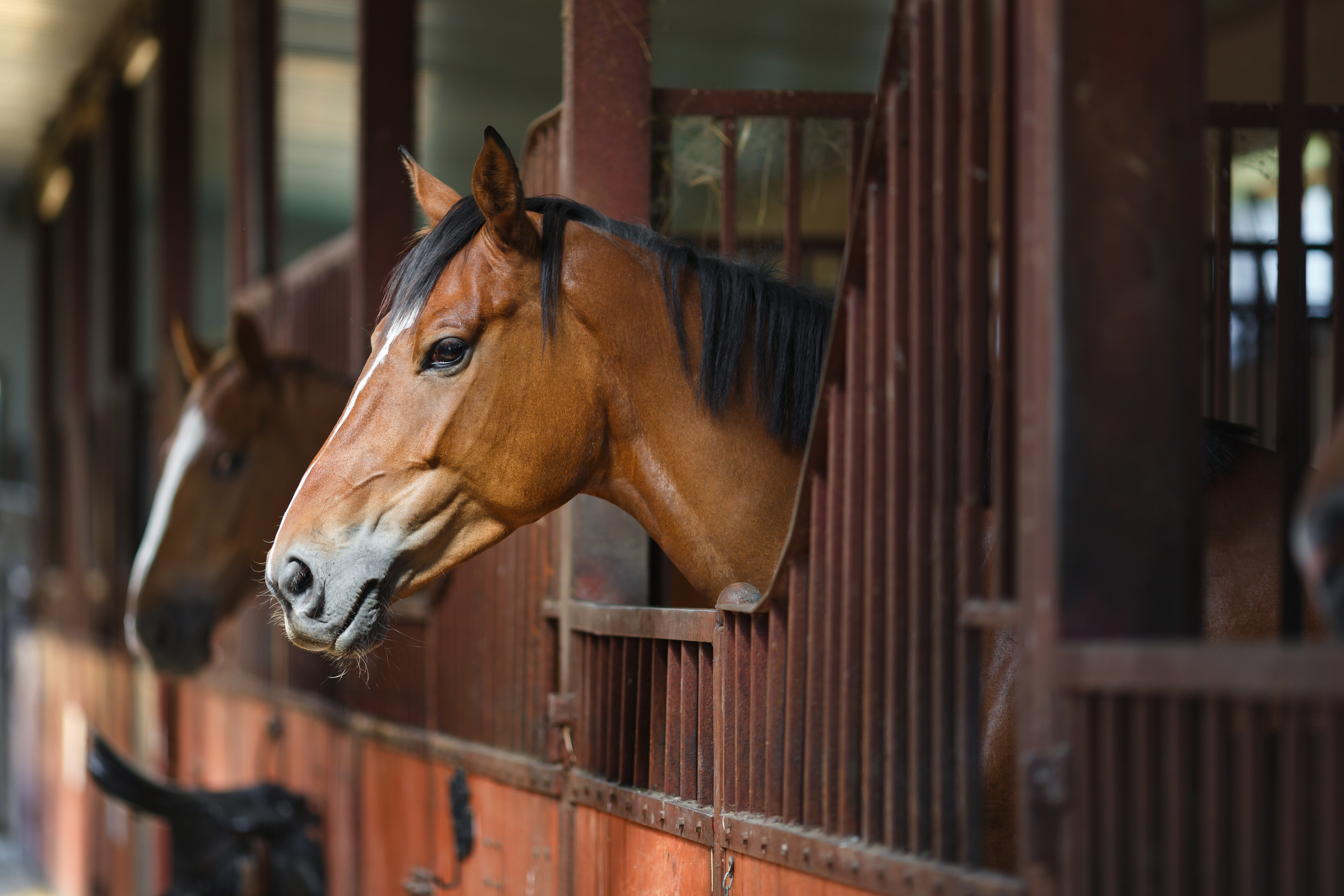Is your horse in the mood to perform well?
- April 8, 2025
- ⎯ Christine Barakat
Before you tack up, take a minute to observe your horse in his stall for clues to his mood. If he appears unhappy or aggressive, prepare yourself for a bumpy ride: He is likely to have a negative attitude and choppier gait when working under saddle. That’s the upshot of new research from France.
The study, conducted at the Universite de Tours in Nouzilly, included 43 horses used for lessons at a riding school. The horses were kept in box stalls and turned out for only one hour per week in individual sand paddocks. Otherwise, they were ridden approximately six hours a week—in either dressage, jumping or eventing—by advanced riders studying for instructor exams.

For the first six weeks of the study, the horses were observed in their stalls several times a day and their behaviors were documented. Researchers specifically looked for indicators of a negative mental state and “compromised welfare” associated with being kept in a stall, including aggression towards people, a withdrawn posture reflecting a depressive state, general hypervigilance, toward the environment, or cribbing and other stereotypies. The average number of observations for each horse was 90.8 during this period.
Next, the researchers surveyed the head instructor at the riding school, who was familiar with all of the horses. The survey asked three questions about each horse’s tendencies under saddle, such as if he exhibited fear or anxiety-related behaviors, was reluctant to move forward or showed discomfort.
Finally, the researchers had the horses ridden by a single expert rider using the same type of tack for each horse. The rider was not familiar with the horses and was not aware of the behaviors that had been observed in the stall. The riding session was filmed and the video reviewed by an independent assessor who noted certain behaviors that might indicate a negative attitude, such as bolting, head shaking and tail swishing, as well as overall demeanor. In addition, the rider was outfitted with two inertial sensors to track the movements of her chest and lower back and an additional sensor was placed on the underside of the girth to measure the horse’s torso movement in all directions.
When the researchers analyzed the collected data they found correlations between a behavior expression of negative emotion in the stall and under-saddle performance. “Our results showed that horses who were aggressive toward humans in loose boxes had higher dorsoventral accelerations than non-aggressive horses,” says Alice Ruet, PhD. The rider also experienced more movement while on the aggressive horses. “This result indicates that aggressive horses have a stronger whole-body strike on the ground. Visually, this characteristic of locomotion gives the impression of a ‘jerky’ gait.”
[Click here to about alternatives to the traditional box stall.]
Ruet says that other studies have found similar correlations in people, whose emotions influenced their way of walking. “This result is very interesting because in humans, the emotions felt can be reflected in the way of moving. It seems that this is the first time in horses that a link has been made between the state of welfare and the way of moving.”
The difference did not necessarily mean horses were more difficult to ride, says Ruet. “In this study we did not directly demonstrate that the horses were more or less easy to ride, because it is mainly the horses’ behavior that was analyzed and not the rider’s perception. The crux of this study is that horses in a state of poor welfare are in a more negative emotional state when they are ridden.”
Horses who were not aggressive in the stall expressed their negative emotional state in other ways under saddle. For instance, horses who were withdrawn in the stall scored higher on the survey question about reluctance to move forward. Horses who were hypervigilant or exhibited stereotypies in the stall were more likely than their peers to adopt negative behaviors and body postures undersaddle.
[Click here to learn how to read your horse’s body language.]
Ruet says these findings can contribute to open the door to more work linking welfare with performance. “These results contribute to many perspectives, such as better understanding the links between the welfare of the horse, its health and its performance under saddle.”
And while this study did not investigate whether changes in management could influence a horse’s under-saddle movement and attitude, Ruet says efforts to improve overall welfare reduce a horse’s negativity and, therefore, might result in better performance. “The scientific literature now provides a better and better understanding of the needs and motivations of horses,” she says. “For example, it [would be] interesting to promote a high-fiber diet, to maximize social relationships between horses and offer the possibility of moving freely, for example in a paddock, for several hours a day. In addition, it [would be] interesting to try to optimize practices such as grooming as much as possible, in order to establish a good quality human-animal relationship that can generate positive emotions in animals.”
Reference: “Horses could perceive riding differently depending on the way they express poor welfare in the stable,” Journal of Equine Veterinary Science, August 2020
Don’t miss out! With the free weekly EQUUS newsletter, you’ll get the latest horse health information delivered right to your in basket! If you’re not already receiving the EQUUS newsletter, click here to sign up. It’s *free*!





